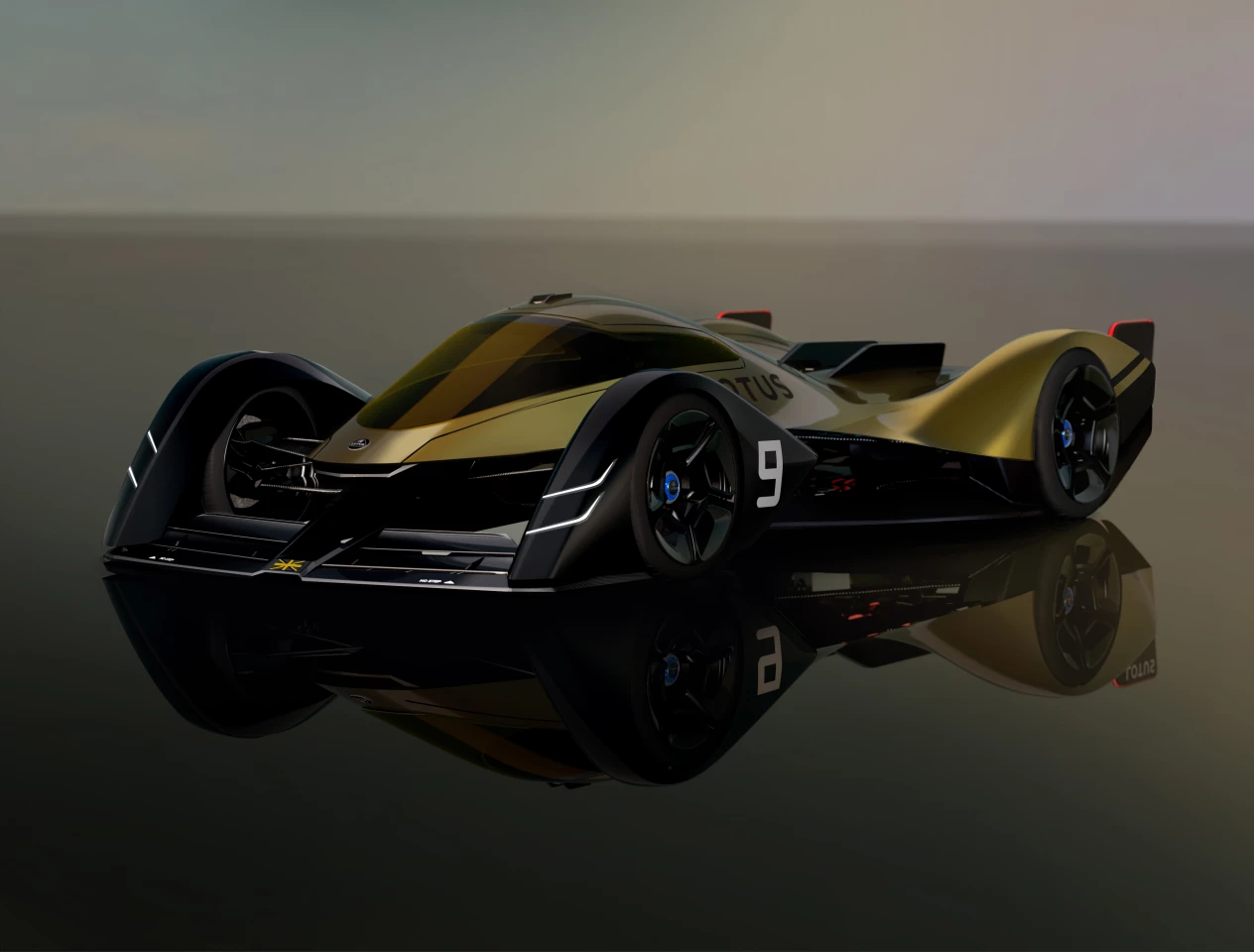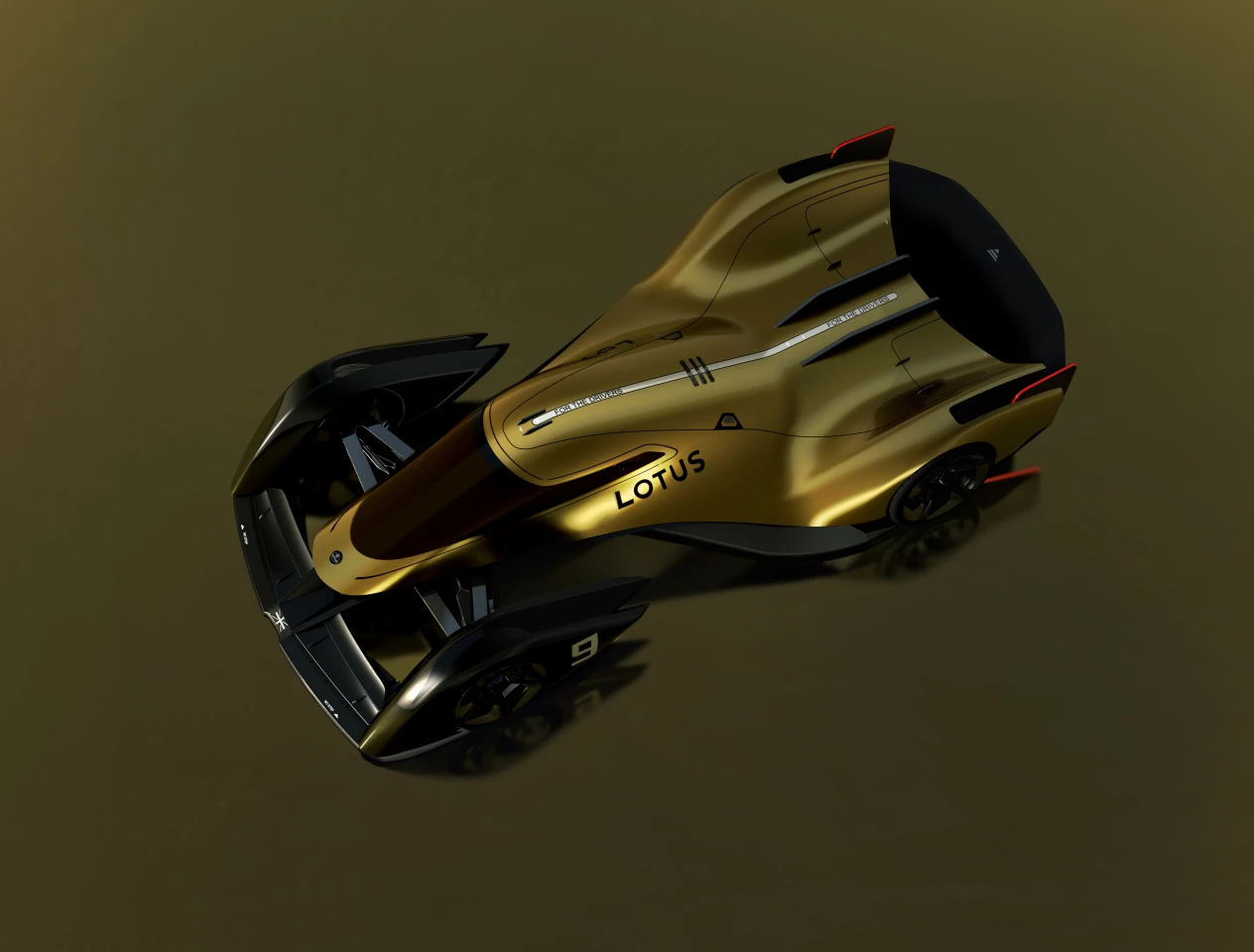"A racer partly driven like a car and partly flown like a fighter jet" – that's how Lotus describes the all-new E-R9 design study. The Hethel, UK-based automaker prepares for the future of endurance racing by fast-forwarding through nine years of technological development and imagining what Le Mans might look like in 2030. The vision involves super-sleek, aircraft-inspired race cars with fast-morphing aero-optimizing body panels and high-powered Evija-derived electric drives with advanced torque vectoring.
Lotus didn't merely pick out 2030 as a nice round year in the future. The date represents the 75th anniversary of Lotus' Le Mans racing debut in 1955, when a team that included company founder Colin Chapman raced the Lotus Mark IX. The "9" in the Endurance Racer study's name pays homage to that car, as well.
More than just a visual study created by bright-eyed designers, the E-R9 came to life as a collaboration between Lotus' design and engineering teams. Involved in its conception were Richard Hill, Lotus chief aerodynamicist; Louis Kerr, Geely Group Motorsports International GT technical director and principal platform engineer for the Evija; and Russell Carr, Lotus design director.
"What we’ve tried to do is to push the boundaries of where we are technically today and extrapolate into the future," commented Richard Hill. "The Lotus E-R9 incorporates technologies which we fully expect to develop and be practical."

Those technologies start in the upcoming Evija hypercar, which provides the basis for the future race car's electric powertrain. Like the 1,973-hp (2,000-PS) hypercar, the endurance racer has four independently powered wheels and torque vectoring. The vectoring system gains next-generation driver inputs for a more human-driven racing experience that relies less on machine intervention. The powertrain also benefits from nine years of battery development.
"Battery energy density and power density are developing significantly year on year," explains Louis Kerr. "Before 2030, we’ll have mixed-cell chemistry batteries that give the best of both worlds, as well as the ability to ‘hot-swap’ batteries during pitstops."

The E-R9's real pièce de résistance and looking glass into the future is its morphing body. Located along the delta-wing section of the body profile, the transforming body panels actively change shape to precisely tune vehicle aerodynamics to the conditions of air and track. Available via both driver selection and automatic sensor control, the shape-changing panels minimize drag on the straights and maximize downforce around corners. Further enhancing performance, vertical control surfaces at the rear adjust to provide sharp directional shifts not limited by the grip of the tire contact patch – hence the fighter jet piloting comparison.
We'll have to wait until 2030 to see if endurance race cars end up looking anything like Lotus' E-R9 vision, but the seed that planted that vision will start growing much sooner. Lotus plans to begin Evija production this year.
Source: Lotus







